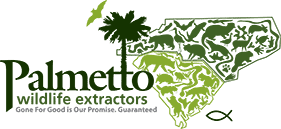
Today, it is common to catch a fleeting glimpse of a coyote as they move from their territory in an effect to locate shelter, food, water, or attempt to reproduce. While mostly a nocturnal creature that is relatively shy around humans and other types of animals – apart from those that they consume – it is not at all unusual to find that the area around your property or even your property is prone to a visit – especially if you live in North and South Carolina.
In this guide, you will be introduced to a few strategies that will help you avoid experiencing problems if you find yourself in the presence of a coyote.
Habituation to Humans
If you encounter a coyote that does not seem to be frightened of you and fails to run off in your presence, it is quite likely that the creature now has a habituation to humans. In most instances, this is a direct result of being fed by people. This could have been direct or indirect.
For example, a person may have given food to the coyote, left food outdoors, or failed to secure garbage left outdoors. As a result, the fed coyote will become dependent upon the feedings and will seek out areas where people frequent, in order to find food.
If faced with a coyote that appears to have a habituation to humans, follow the steps outlined below:
- First, you should never feed the creature.
- If you have pets that are fed outdoors, you should always bring in the remaining food when they are finished. The same goes for the water bowl. Leaving access to food and water outside will likely attract coyotes.
- If you have an outside area where you place your garbage, you should always ensure that it is secured and all containers have a tight-fitting lid.
- You should avoid leaving out bird feeders for long periods of time. The reason being, coyotes are attracted to the animals that may use the bird feeders for nourishment – examples include rodents – such as squirrels – and lizards, birds, and other types of animals.
- If you have pets, you should keep them indoors and not allow them to run loose on their own. If they have to go outside, you should remain with them at all times.
Face-to-Face Encounter
If coyotes are in or near where you live, it is quite likely that you will – eventually – experience a face-to-face encounter. If this happens during the daytime hours, it likely means that the creature is habituated to humans.
While most will simply want access to food, others may view you as food, or prey. If possible, you should try to change your route. Otherwise, take the following steps:
- Firstly, you should never run away as this could instigate an attack.
- Next, you should make a lot of noise. You may shout or throw something towards the animal.
- If you are walking outdoors, take something with you that will allow you to make a lot of noise to scare coyotes away.
Aggression
If you live near coyotes, you may encounter one that is aggressive. Typical signs of aggression include growling, barking, snarling, and attempting to attack. While this may be seasonal behavior due to puppy season among the species, it could indicate other issues such as the presence of rabies.
You should contact the local authorities as quickly as possible. You may also contact an animal trapper. Palmetto Wildlife offers coyote removal services in North and South Carolina.
To learn more about getting rid of a coyote or how to avoid conflicts with the creatures, contact Palmetto today at: http://palmettowildlifeextractors.com/contactus/

